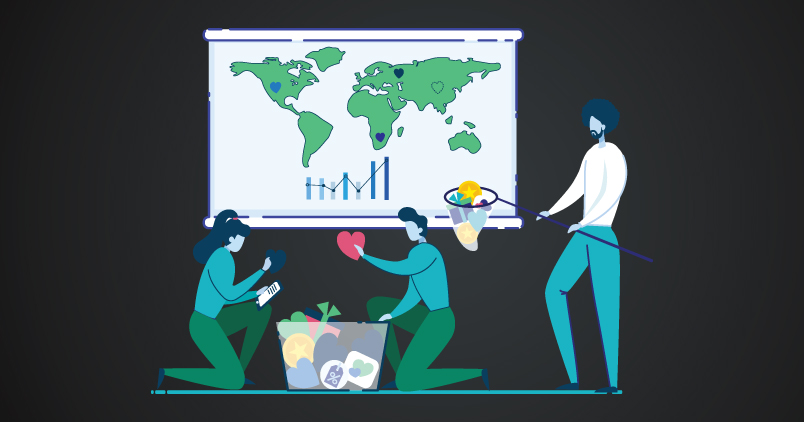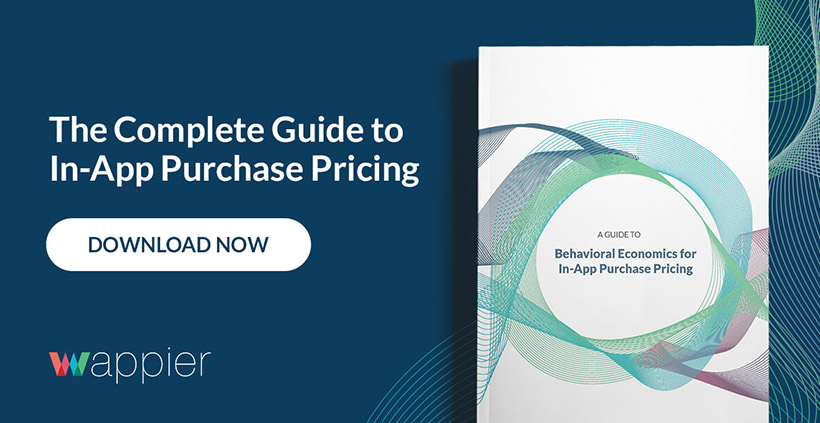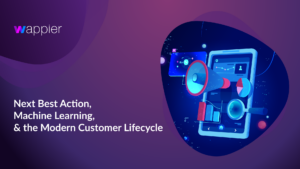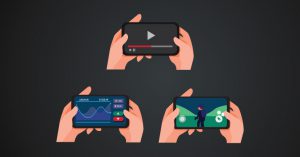By implementing a robust in-app purchase pricing strategy, developers can maximize revenue from their users.
In-app purchases are one of the best performing monetization options available to mobile developers in 2020. Over the past year, direct revenue from the App Store and Google Play reached $120 billion, even though the overwhelming majority of apps are free to download. That makes IAPs a primary revenue driver for mobile studios, provided they can implement an effective in-app purchase pricing strategy.

Why developers need an in-app purchase pricing strategy
When preparing your in-app purchase pricing strategy, it’s crucial to remember that IAPs are just one monetization channel. App developers ought to explore all monetization options to ensure that they are serving each audience segment.
Developers can monetize any product on Google Play or the App Store in one of three ways:
- Paid app download: Offering an app directly from the storefront, typically as a one-time purchase.
- In-app purchase: Offering products within an app, such as virtual currency or premium items.
- In-app advertising: Offering ads within an app in exchange for revenue from an advertiser.
Of the three options, IAPs are a high-cost, high-return monetization strategy — they are the most expensive to implement, but also tend to be the highest drivers of revenue. According to one Liftoff study, iOS and Android gaming apps earned $22.51 billion and $18.94 billion respectively in 2019 alone, representing 4.27% year-on-year growth.
Despite these gains, IAP costs pose a risk for new apps and intellectual properties, let alone for smaller developers. In the same report, Liftoff noted that developers spend an average of $86.61 to acquire a single paying user. While this cost varies significantly by region, it leaves app developers with little room for error.
If the acquisition price tag seems too high, it may be ideal to supplement IAPs with in-app advertising — a low-cost monetization technique. In a free-to-download app, ads will monetize engagement from the majority of users so that a relatively small number of IAP conversions — usually 1% or 2% — can drive high volumes of direct revenue. One report found that 43% of gaming app revenue and 21% of non-gaming app revenue comes directly from IAPs.
For more details on in-app pricing strategies and statistics, read The Most Important IAP Statistics for Mobile Game Publishers in 2020.

Choosing the right IAPs
While in-app purchases seem relatively straightforward at first glance, they take many forms in the app. Gaming apps alone may include the following examples:
- Cosmetic skins and avatars
- Gameplay bonuses
- New gameplay features
- Disabled ads
- Unlocking full version of a trial product
- Other premium content
On top of these formats, developers also need to consider technical details when implementing an IAP. More specifically, IAPs must fit specific categorization tiers that are defined by either Android or iOS.
Android
IAPs processed within Android are managed through the Google Play Console via APIs integrated with the app itself. In-app transactions on the Android platform can be for:
- One-time products: A single, non-recurring change for an in-app product.
- Rewarded products: Any in-app product awarded to users for completing specific tasks, such as watching a video advertisement.
- Subscriptions: Any in-app product purchase that requires a recurring payment.
iOS
IAPs processed in iOS are managed by using the StoreKit framework to integrate payments with the App Store. In-app transactions on the iOS platform can be for:
- Consumables: Are deleted upon use, can be purchased multiple times.
- Non-consumables: Single purchases that do not expire.
- Auto-renewable subscriptions: Unlocks services that automatically renew after fixed intervals until future payments are canceled.
- Non-renewable subscriptions: Unlocks services that expire after a limited duration, but can be purchased again.
The developer’s role here is to decide what kind of transaction will be the most effective for their chosen genre or category. In mobile games, offering various tiers of consumable and durable virtual goods is an effective in-app purchase pricing strategy. Meanwhile, subscriptions tend to be well-suited for OTT streaming platforms or any app that offers an ongoing service.
These categorizations aren’t always clear-cut. Many free-to-play gaming apps offer subscriptions that will disable advertisements for their duration, for example. The key is understanding which purchase options will resonate with a target audience and ensuring it matches the payment structure of the hosting app storefront.
For more information, read The Most Popular In-App Purchases of the Last Decade.

Selecting the correct App Store pricing tier
There is one central difference between in-app billing processes for the App Store and Google Play that developers should never overlook: pricing tiers.
In short, while Google Play allows developers to assign customer prices — barring specific limitations by region — they cannot do the same in the App Store. Instead, one must choose from a broad selection of pricing tiers with pre-defined costs for each region. Understanding this framework is crucial for developers who wish to publish apps on the iOS platform. The good news is that there are benefits to leverage when working within the ecosystem.
The App Store currently supports:
- 200 subscription tiers
- 94 app and IAP tiers, consisting of
- 87 standard tiers
- Seven alternate tiers
- One additional “free” option
Each tier lists a fixed monetary value for every currency supported on the iOS platform. By choosing a particular level, your in-app pricing option will automatically adjust in every country where the app is available with no additional action. Apple then takes a 30% revenue cut from every transaction.
For example, a Tier 10 virtual currency purchase represents:
- $9.99 in revenue, $6.99 in profits
- CAD 13.99 in revenue, $9.79 in profits
- ¥68.00 in revenue, ¥47.60 in profits
- €10,99 in revenue, €7,69 in profits
Developers must note that Apple directly assigns its pricing tier values instead of applying USD-based conversions. As of writing, the USD to JPY conversion is $1 to ¥106 to reflect current market conditions. A Tier 1 IAP, however, is worth USD 0.99 and JPY 120 to reflect market averages. Doing so allows prices to remain relatively constant during minor market fluctuations without impacting the user experience. Apple occasionally revises values to reflect strengthening and weakening currencies, but these instances do not apply across the entire tier.
For more details on App Store price tiers and taxation practices, read our full resource, App Store Pricing Tiers — The Global Guide.

Implementing best practices
Once you have chosen the right IAP category and pricing tier for your app, it’s time to consider optimization strategies and other best practices. These factors will help maximize revenue, convert valuable users, and let your content stand out in a highly competitive market.
- Leverage market research and user segmentation: Understanding your audience lets you engage them more effectively, and an engaged user is far more likely to spend money on your app. Developers can use market research to learn about their target demographics and segment users. Our own Smart Audience Management feature can automate much of this process.
- Run promotions and optimize pricing: With millions of free apps on Google Play and the App Store, it’s crucial to highlight value wherever possible. IAP discounts, promotions, and optimized pricing can enhance that value for users and make them likely to convert.
- Engage your users: When you are testing a mobile game, do your players enjoy it? The easiest way to find paying customers is to offer robust and engaging experiences that are worth a valuable contribution.
- Predict & prevent churn: Traditional wisdom says it’s less expensive to retain customers than to acquire new users. If you can give reasons for users to revisit your app regularly, it’s possible to increase the lifetime value of each converted user. Consider adopting predictive analytics to target users at key points in their app experience.
For more information, read In-App Purchases – How They Work In 2020.

Designing the optimal UI
One of the most reliable ways to increase IAP revenue is to ensure users are aware of the option. According to Forbes research, a well-designed user interface update can increase conversions by up to 200%. Achieving this goal relies on two essential user experience metrics: awareness and consideration.
Awareness
If you gave your app to a new user, would they find the IAP storefront without any prompting? If the answer is no, UI updates are a necessary pricing strategy. According to the principles of sales funnels, your converted users will only be a fraction of those who are made aware of the IAP store in the first place. Therefore, by enhancing awareness, you enhance revenue. Some examples might include:
- Adopting common visual language and iconography from other apps in your category.
- Creating a sharp contrast between the storefront button and your interface.
- Minimizing the number of actions it takes to reach the IAP store from any app screen.
Consideration
Awareness is only the first step of your in-app sales funnel. Next comes consideration, where developers include enough contextual information to highlight a transaction’s value to users. For example:
- Create a contrast for IAP discount sales and bundle products using the UI. Banners or pop-up notifications with statements like “50% off” are ideal.
- Use the occasional full-screen interstitial to highlight contextual details, such as the features included in a bundle purchase.
- Don’t forget about white space! A little breathing room creates a natural contrast between UI elements and focuses user attention as much as any pop-up notification.
For more information, read In-App Purchase UI Design – Tips For Increasing Conversions.
Looking for your ideal In-app purchase pricing strategy?
In 2020, in-app purchases are a key element of any developer’s monetization strategy. At wappier, we help developers maximize their revenue with AI-powered best action recommendations. By covering everything from pricing optimization to audience management, you’ll be able to make the right decisions that increase long-term performance.
Contact us today to find out how wappier can maximize IAP revenue for your apps.







